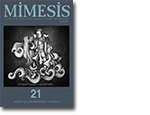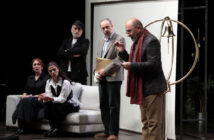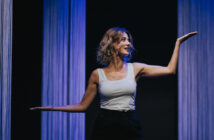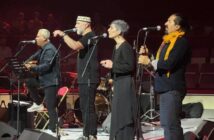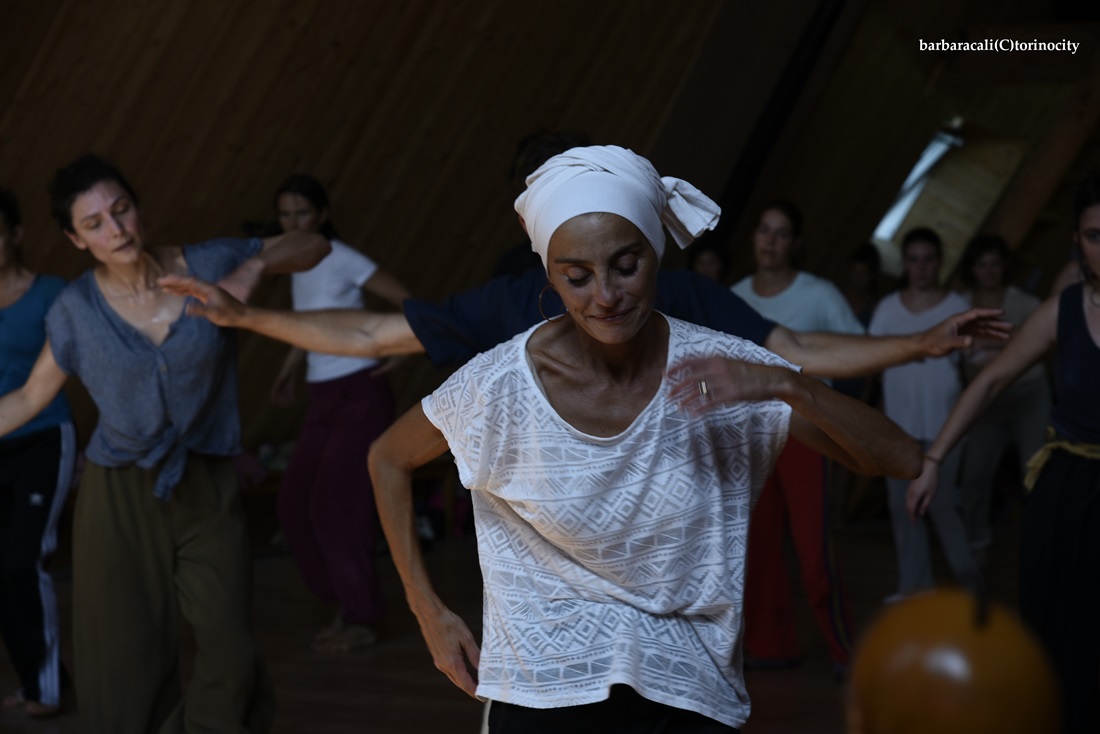
Mimesis Söyleşi / Ağustos ’22- Luc en Diois
2022 Ağustos ayında Fransa’nın La Drome bölgesinde yer alan Luc en Diois köyüne, her yıl düzenlenen AS Nomadic College’a ilk kez katılmak üzere İstanbul’dan yola çıktım. O sene NC’de, Türkiye’de Barış Mıhçı tarafından yürütülen Axis Syllabus çalışmalarına katılan ekipten yedi kişiydik. Atölyeler boyunca Axis Syllabus Araştırma Ağı’nda yer alan ve Nomadic College’da atölyeler veren Frey Faust, Francesca Pedulla, Barış Mıhçı, Jerome D’Orso, Manuela Martella ve Anne Cecile Chantune ile söyleşiler gerçekleştirdik. Türkiye’de AS çalışmalarına katılan arkadaşlarımla birlikte bu söyleşileri yayına hazırladık.
Söyleşi ve çeviri: Banu Açıkdeniz
Banu Açıkdeniz: Sevgili Francesca, Axis Syllabus arşivi ile yolunuzun nasıl ve nerede kesiştiğini merak ediyorum. Ama öncelikle akademideki deneyiminizden bahsederek başlayabilir miyiz?
Francesca Pedulla: Akademik yolumun biraz eziyetli olduğunu söyleyebilirim. Lisede Classics[1] okudum: Antik Yunanca ve Latince. Bu eğitim beni üniversiteye yönlendirdi, çünkü sadece bu tür bir eğitimle bir şeyler yapmak mümkün değildi. Üniversitede iki yıl mimarlık okudum. Mimarlık konusundaki tutkum hala devam ediyor ve mimarlarla çalışmaktan gerçekten keyif alıyorum; çünkü onların dünyayı görme biçimlerini seviyorum. Ancak mimarlık disiplininin tam olarak bana göre olmadığını erkenden fark ettiğim için de şanslıyım.
O zamanlar da [üniversitedeyken] dans ediyordum ama dans benim için daha çok bir hobi gibiydi. Dansın benim için bir yaşam biçimi olabileceği aklımın ucundan geçmemişti. Ailem sanatçı bir aile değildi, dans çocukluk dünyamın bir parçası olmadı ama tiyatroyla çok ilgiliydim. Bu yüzden mimarlığı seçtim; tiyatro sahneleri tasarlayabilmek, yaratabilmek için.
Sonrasında ise aslında daha çok “düşünce”yle ilgilendiğimi fark ettim; kavramlarla, felsefeyle, yaratıcı metinlerle… Böylece tiyatro ve performans tarihi ve tiyatro edebiyatı üzerine okumaya başladım. Ve sonuç olarak bu alandan mezun oldum.
Bu arada, bu ikinci döngünün başlarında eş zamanlı olarak Afrika dansları üzerine çalışıyordum. Anoreksiyayla mücadele ettiğim çok zorlu bir anda benim için çok büyük pozitif bir değişim oldu bu. Sanırım diğer şeylerin yanı sıra özellikle dansa yakınlaşmam beni çok değiştirdi. Çok iyileştiriciydi. Bedenimin bir gücü olduğunu yeniden hissettim. Sanırım beni Afrika kültürünü incelemeye ve daha derine inmeye iten şeylerden biri de bu kültürün bedenle yakında ilgileniyor olmasıydı. Beden hem bir kanal hem de bir madde olarak algılanıyordu. Çünkü tüm törenler ve geçiş ayinleri, bedenin (maddi) manipülasyonu ve kullanımı yoluyla ‘Kutsal’ (Devine) olanın ifadesiyle inşa edilir; şarkılarla, sözlerle, ritimle… Değişim yaratmak için, metamorfoz için. Bunun benim için, kişisel gelişimim ve şifalanma yolum için çok önemli bir unsur olduğunu düşünüyorum.
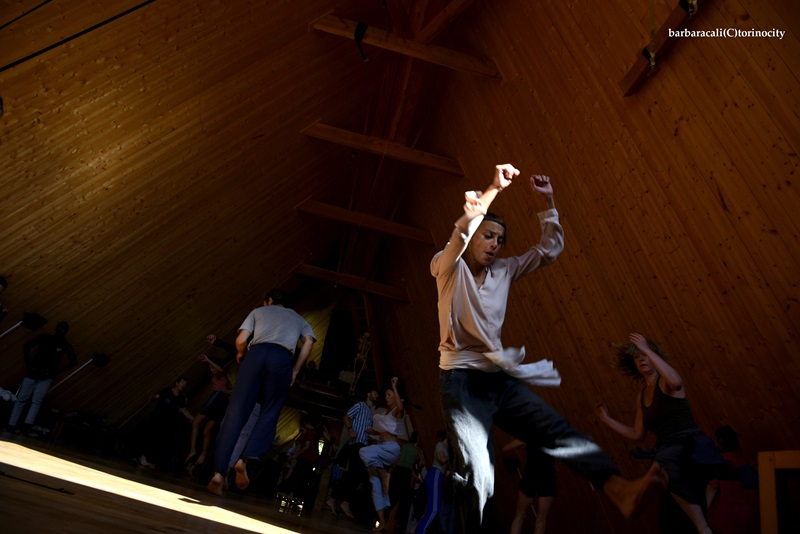
Bu alanda çalışmaya başladığımda harika insanlarla tanışma fırsatım oldu, özellikle de Koffi Kôkô ile. Beninli bir koreograf, pedagog ve dansçı olan Koffi Kôkô Paris’te yaşıyordu. Paris gerçekten de Afrika dansının yeni dalgasının merkeziydi. Onunla orada çalışmaya başladım. Dans etmeye Koffi sayesinde karar verdim.
Çalışmaları çok ilginçti çünkü Afrika’dan bir grup genç koreografla birlikte kendi kültürünün maneviyatını – Vodoun[2] kültürünü – Avrupa dans alanına taşımayı başaran ilk kişiydi. Bu, yeni sanat dalgasını folklorik bir kafese hapsetmeme yönündeki ilk çabaydı. Böylece FEIDA’yı, Fédération Internationale de la Danse Africaine’i kurdular. Kendi bilgilerini kullanarak sanat yapma haklarını talep ediyorlardı.
Üniversiteyi bitirdim ve bu okula kaydoldum. Fransa/Bourdeux’da iki yıllık bir oyunculuk okuluydu. Birçok farklı Afrika dansı ve dans stili öğreniyorduk. Bunlar farklı etnik grupların farklı dans tarzlarıydı. Ayrıca biyomekanik, anatomi ve müzik eğitimi de alıyorduk. Bu yıllarda Benin’e gitmeye başladım. Okul, sahada bir bağlam içinde çalışmaya odaklanan bu tür geziler düzenliyordu. Benin beni gerçekten etkiledi. Aşık oldum.
Sonra her yıl Benin’e gitmeye başladım. Ve Paris’te doktora yapmaya karar verdim. Konum “Batı Afrika’da Dansının Çağdaş[3] Durumu” idi. Yani “Çağdaş Afrika Dansı” üzerine değil, Afrika’da neler olduğu üzerine çalışıyordum. O dönemde özellikle Fransa’da olup bitenlerle çok ilgiliydi. Fransa, şimdi “Çağdaş Afrika Dansı” denilen şeyi geliştiriyordu. Yeni bir dans tarzı yaratmak için Fransız koreografları Afrika’ya gönderiyorlardı. Fransa’daki koreografi merkezlerine – Ulusal Koreografi Merkezi (CCN)[4]– benzer bir şeyi Batı Afrika’da da kurmaya çalışıyorlardı.
Paris’te neredeyse bir yıl kaldım. Ve sonra tiksindim. Profesörümle gerçekten anlaşamıyordum, sürekli diğer tarafta olmaktan çok yorulmuştum: yapmak yerine, çalışmak. Bu yüzden çok ani bir şekilde [doktorayı] bıraktım. Kimseye bir şey söylemeden bir gece treniyle İtalya’ya döndüm(gülüyor).
İtalya’da, tanınmış bir İtalyan koreograf olan Giovanni Di Cicco’nun topluluğunda çalışmaya başladım. Bir noktada, sadece başkalarının projelerinde çalışmak yerine kendi eserlerimi yaratmaya karar verdim. ‘Geleneği nasıl koruyacağımıza ama aynı zamanda onu nasıl geliştirmeye devam edeceğimize dair bazı fikirlerim var’ dedim. Yani sadece öğrendiğim geleneksel dansları korumanın bir yolunu aramıyordum. Ve bu yaklaşım o zamanlar Paris’te pek de hoş karşılanmıyordu.
2001 yazında Viyana’da Frey Faust’dan ilk atölyemi aldım. Bilirsiniz, bazen hayat böyledir… O yıl ImPulsTanz Festivali için oradaydım.
Batı Afrika’da seyahat ederken ve okurken adımları deşifre etmek için bir şeye ihtiyacım vardı. Tabii ki bu sadece adımlarla ya da sadece bir dans [formuyla]ilgili değildi.
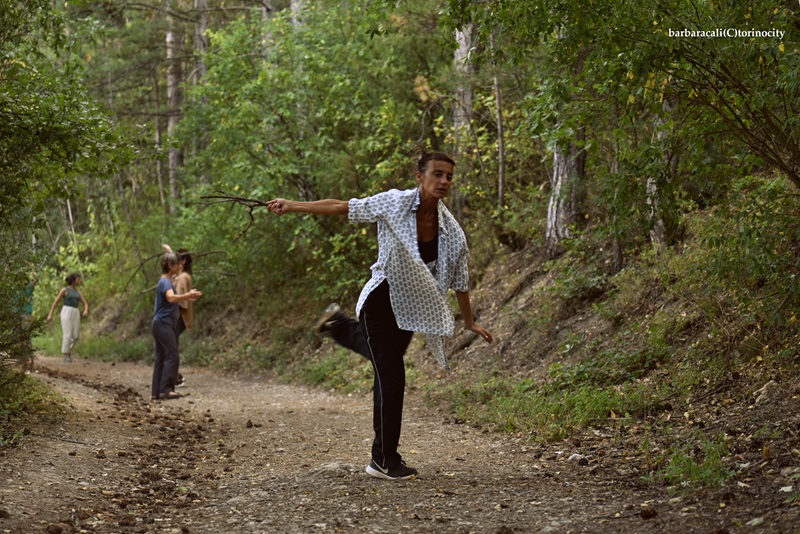
Dans derslerine katılırken veya farklı çağdaş dans öğretmenleriyle çalışırken fiziksel olarak hareket analizi üzerine çalışıyordum, ancak sunulan araçlar çok etkilendiğim bu dansları daha iyi anlamama yardımcı olmuyordu. Bir sanatçı olarak araştırmaya ve bu dansları kullanmaya devam etme isteğim güçlüydü ama bu benim için yeterli değildi. İşte bu, Axis Syllabus ile çalışmalarım arasındaki bağlantıydı ve AS üzerine çalışmaya başlamamın nedeni de buydu.
Bu dönemde tek başıma Benin’e gidip gelmeye başlamıştım ve orada Eric Acakpo ile tanıştım. (Aslında kendisi de burada Nomadic College’da olacaktı ama ne yazık ki bu yıl vize alamadı). Ailesi Benin’de çok önemli bir yere sahip, çünkü yıllardır Vodoun kültürünü uyguluyor ve aktarıyorlar. Bu aileyi özel kılan bir diğer şey ise zihinsel açıklıkları. Özellikle Eric’in babası farklı alanlardan birçok araştırmacıyı tapınağına ve evine davet etmiş ve onlarla canlı tartışmalarda bulunmuş. Yani onun zihniyeti gerçekten çok [özel].
[Bu ailede] bir kız evlat gibi karşılandım ve bu deneyim benim için çok önemliydi. Orada antropolog bir arkadaşımla birlikteydim, birlikte araştırma yapıyorduk. Benim araştırmam daha çok dans üzerineydi ama onunkiyle aşağı yukarı benzer bir motivasyonla, benzer bir arayıştı; ait olmadığımız bir kültüre nasıl gireceğimizi bulmaya çalışıyorduk.
Bu çok yoğun bir eğitimdi. 2-3 yıl boyunca 3-4 ay Benin’de Eric’in ailesinin evinde kaldım, bazen arkadaşımla bazen de tek başıma. Oradaki tek beyaz insanlar bizdik. Yerel halk oldukça misafirperver olsa da uyum sağlamakta zorlandığımız pek çok an oldu, pek çok kez yanlış anlaşılmalar yaşandı. Bu sırada, birçok töreni izleme şansımız oldu. Yani orada gerçekten de bir ziyaretçi gibi değildim. Daha sonra, 2003 yılında Vodoun’a inisiye olmaya karar verdim. Bu da başka bir büyük adımdı. O dünyanın içine giriyorsunuz, yani artık onu dışarıdan görmüyorsunuz. Bu da çok zor bir deneyimdi. Çünkü kendimi bu mistisizme bırakırken kesinlikle kancamı kaybetmek istemiyordum. Bu yüzden kendi zihniyetim (gerçekliğe bakış açım) ile [bu yol]arasında gidip gelmek zor bir işti ve hala da öyle. Her zaman bir benzerlik bulunamayabiliyor. Her halükarda, bu benim için çok önemli bir deneyim olmaya devam ediyor.
Çalışmalarım iki ana yönde ilerlemeye başladı. Biri Axis Syllabus tarafından desteklenen daha “teknik” diyebileceğimiz bir çalışmaydı ki bu elbette tamamen teknik değildi. Diğeri ise Vodoun kültürünü incelemekti: orada olmak, orada kalmak, hatta orada yaşamak. Bu iki dünya birbirinden çok uzak görünse de, benim için aslında öyle değiller. Çünkü Axis Syllabus’un temel amacı insan bedenini “yeniden konumlandırmak”, onu diğer bedenlerle, çevreyle ve her şeyle ilişkili olarak görmektir. Buna “doğa” da diyebiliriz. Tüm bu fraktallara baktığımızda, evrim süreci ve Vodoun felsefesi, aslında hemen hemen aynıdır: insanlar tüm çevreyle ve tüm unsurlarla sürekli bir ilişki içindedir. Onlara “tanrılar” diyebiliriz, “enerji” diyebiliriz ya da bir çevrenin varlığından bahsedebiliriz. Dolayısıyla benim için bu iki alan arasında kesinlikle bir sürtüşme [veya çelişki]yoktu. Başlangıçta, Eric ile birlikte sadece Beninliler için küçük atölyeler düzenliyorduk. Onlara Axis Syllabus arşivinden bazı araçlar vermeye çalışıyordum ve bu araçları geleneksel dansları analiz etmek için kullanıyordum.
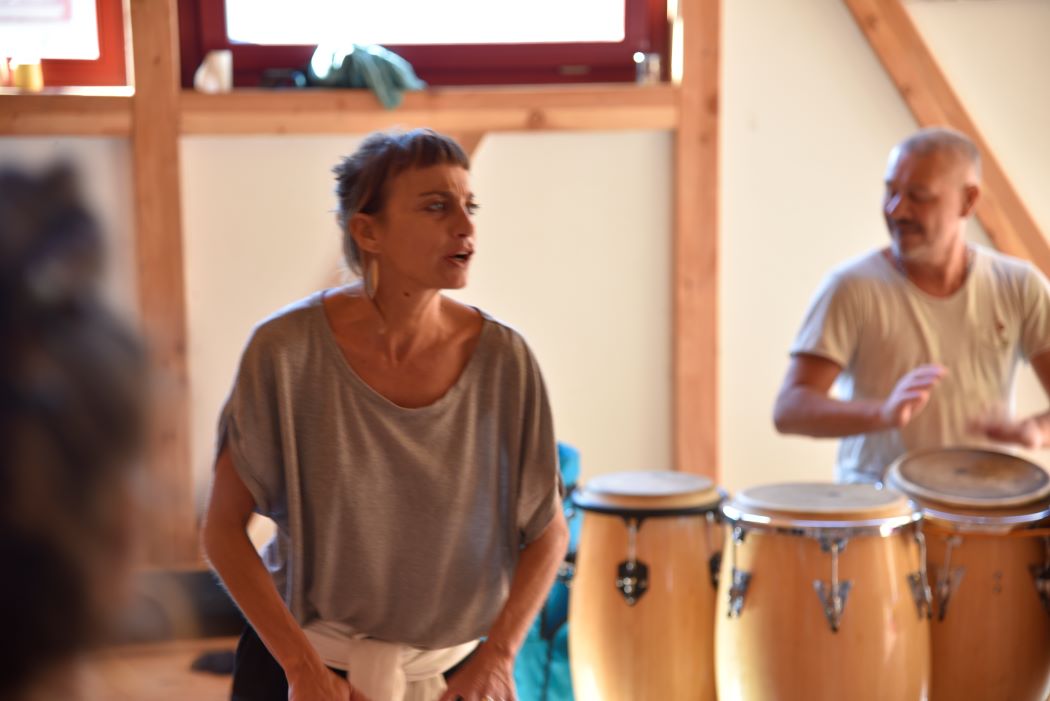
Başlangıçta bu çok bencilce bir ilgiydi. Öğrenmek istiyordum. Bakarak çok şey öğrendim. Saatlerce bakarak… Ama yine de bir boşluk vardı. Belki yeterince olgun değildim ya da yeterli araçlara, formasyona ve deneyime sahip değildim. Fakat geleneğin dönüşümüne izin vermek gerektiğini düşünüyordum. Toplum dönüşüyor ve her şey değişiyor. Ve değiş tokuş eskisinden çok daha hızlı gerçekleşiyor. Dolayısıyla uyum sağlama ihtiyacı var ve bu bir tür baskıya dönüşüyor. Ve tabii ki sanat da benzer şekilde bir dönüşüm geçiriyor. Ama nasıl? Batılı dans dünyasından gelen etkilerin geleneksel dansların temel prensiplerine uymadığını gözlemliyordum. Frey’in çözmeye çalıştığı problem buydu: teknik ve estetik arasındaki fark. Bu hala oldukça kaotik bir mesele. Teknik, mekanikle, bir şeyleri yapma biçimiyle ilgili olmalıdır; bir şeyleri yapmanın belirli bir “yolu” ile ilgili değil.
Demek istediğim şuydu: “Tekniğe, bir şeyin nasıl yapıldığına, kasların çalışma şekline, eklemlerin davranış biçimlerine bakarsak o zaman belirli bir dansın veya belirli bir adımın kalbini okumamıza ve daha iyi anlamamıza hizmet eden bilgiye sahip oluruz”. Bir kez kalbe sahip olduğunuzda, o zaman henüz var olmayan varyasyonları da yaratabilirsiniz. Aslında gelenekte de böyle olur. Çünkü orada olan da adımların aynı şekilde tekrarlanması değildir. Bu evrimleşmek ama aynı zamanda yola devam etmektir. Yani kökleri korursanız evrimleşmeye devam ederken geleneği korumayı da sürdürebilirsiniz. Kökleri kaybetmek -belki bu kötü bir şey olmayabilir- ama bir şeyleri kaybettiğimiz anlamına gelir.
Eric’in ailesi aracılığıyla Vodoun’a kabul edilen ilk beyaz kişi bendim. Onlar için benimle başa çıkmak çok zordu ve benim için de onlarla başa çıkmak. Kendilerine sormaları gereken pek çok soru vardı ve bunlar aynı zamanda benim de kendime sormam gereken sorulardı. Kendi dünyalarına girebilmem için bana nasıl yardımcı olacaklarını bulmaya çalışıyorlardı. Ama aynı zamanda tüm korkularımla, direncimle, şüphelerimle ve onlara çok yabancı gelen sorularımla başa çıkmanın yollarını bulmaları gerekiyordu. Sonunda bunu birlikte başardık. Ben, ailesi -özellikle de ağabeyi ve Eric- birlikte bu tercüme, iç içe geçme ve yüzleşme sürecinin üstesinden geldik.
Birlikte yaşamak ne anlama geliyordu? İyi niyetli olmamıza rağmen, her iki tarafta da yüzleşmeler yaşıyorduk, sahip olduğumuzu bile bilmediğimiz birçok önyargıyla birlikte.
Birçok tartışma ve çözümlemeden sonra Eric ve ben iyi bir çözüm bulduk ve bu kutuyu başkalarına da açmaya karar verdik. Böylece dışarıdaki insanları davet ettiğimiz bir proje oluşturduk. Aynı zamanda Avrupa’da çalışmaya devam ediyordum ve bu konuyla da yakından ilgilendiğim için bir dans topluluğu kurdum. Bu Benin’e gelen ve Beninli toplulukla tanışan ilk İtalyan topluluğuydu. Sonra ilk projemiz olan Malentendus et d’autres choses – “Yanlış anlamalar ve diğer şeyler”i yaptık; bu projede, biraraya geldiğimizde ve birlikte kaldığımızda başımıza neler geldiğine baktık ve bunları performansımız için birer malzeme olarak kullandık.
Akademiye olan ilgim hiç bitmediğinden bu alanda da daha fazla çalışmaya başladım. Özellikle kültürle ilgili algımı değiştiren bir filozof vardı; Anthony Kwame Appiah. Kendisi yarı Ganalı yarı İngiliz bir filozof. Onunla bir konferansta karşılaştığımda “yazdığı her şeyi okumalıyım” dedim. Çok karmaşık dinamikleri çok basit bir şekilde anlatmayı başarıyordu. İlk kitaplarından biri Kozmopolitanizm: Yabancıların Dünyasında Etik[5]’di. Bu kitaptan yola çıkarak bir proje oluşturduk. Eric ile tam olarak aradığımız şeyi analiz ediyordu. Birlikte yaşamak ne anlama geliyor? Peki ya farklı değerler? Değerler hiyerarşisinin farklı olduğu aldatmacasıyla nasıl başa çıkılır? Farklı bakış açılarıyla nasıl başa çıkılır?
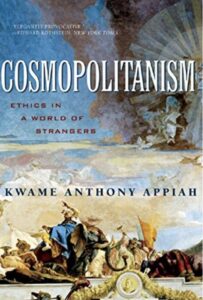
Bu kitapta çok güzel bir örnek var. Bir köy varmış, suyu kötü durumdaymış ve bu yüzden insanlar ishalden ölüyormuş. Batılı doktorlar gelmiş ve suyu dezenfekte etmek istemişler. Suyu içmeden önce kaynatmayı öneriyorlarmış. Ancak köydeki insanlardan çok büyük bir dirençle karşılaşmışlar, ta ki onlarla açıkça konuşana dek. Ve birlikte başka bir çözüm bulmuşlar. İnsanlara suyun içinde kötü ruhlar olduğunu, bu yüzden suyu kaynatarak buharlaştırmaları gerektiğini söylemişler. Çok ilginç, değil mi?
Ama dürüst olmak gerekirse, kim gerçekten bir virüsü gözleriyle gördü? Çok az insan. Virüs kötü bir ruh olarak da tanımlanabilir. Benim için Eric ile yaptığım çalışmanın temelinde bu var. Başkalarının bakış açılarına inanmak zorunda değiliz ama kendi bakış açımızı korumak için onları olumsuzlamamız da gerekmiyor. Diğer perspektifi yadsımak, diyalog için alan bırakmamak anlamına geliyor. Diyalog başlı başına evrensel bir değerdir. Diyaloğa girebiliyorsak; o zaman karar verdiğimizde bir şeyler için birlikte mücadele de edebiliriz.
Bir başka projemiz daha vardı, 4-5 yıl üzerinde çalıştığımız, “Dialogues Inévitables – Kaçınılmaz Diyaloglar”. Bu kez 17 kişilik büyük bir toplulukla çalışıyorduk. Bazı üyeler Benin’den, bazıları Senegal, Kanada ve Fransa’dandı. Bu fikir üzerine çalışmaya başladık. Aslında özünde aynı fikirdi: birlikte yaşamaktan kaynaklanan dinamikleri gözlemlemek, dans ve müziği bakış açılarımızı detaylandırmak ve aktarmak için bir araç olarak kullanmak.
Daha sonra, “diyalog” kavramı üzerine araştırırken, o zamanlar Batı Afrika’da oldukça yeni bir şey olan “tüketimciliğe” odaklanmaya karar verdik ve ‘Para Tanrısı’nın hikayesini anlatan bir eser hazırladık. Bence harika bir projeydi. Çoğunlukla Benin’de çalıştık ama aynı zamanda Brüksel’de, Berlin’de ve İtalya’da da. Aynı konu üzerine ya da bu konuyla ilişkili konular üzerine çalışan başka insanlar da vardı; böylece birlikte projeler oluşturduk. Çok heyecan vericiydi. Brüksel’de, Afrikalıların daha önce hiç görmediği, Brüksel’in banliyösünde 50’li yıllarda inşa edilen çok fakir bir mahalle olan cite de culture‘de (kültür sitesi) çalışıyorduk. Proje süresince birlikte yaşadık ve çalıştık. Kurduğumuz bağ derin ve güçlüydü. Daha sonra araştırmamızı beslemeleri için başka sanatçı ve araştırmacıları da davet ettik. Bu proje 2 yıl sürdü ve ardından “Traces”(İzler) girişimini başlattık.
Banu: Bir süredir Batı Afrika’da sürdürdüğünüz “Traces” projesinden de biraz bahseder misiniz?
Francesca: Traces, Eric ile birlikte tasarladığımız bir proje. The Inevitable Dialogues‘un (Kaçınılmaz Diyaloglar) devamı niteliğinde. Traces’ın alt başlığı interweaving wisdom (bilgeliği örmek ya da içiçe geçmiş bilgelik). Fikir, hareket halindeki bedenin bilgisine dayanıyor. Bu tür bir bilgiyi pek çok farklı şekilde elde edebilirsiniz. Bilimsel, teorik ya da pratik olabilir… Benim için önemli olan, hareket halindeki beden, dans, dans ve müzik arasındaki ilişki ve bedenle ve beden içinde yaşamanın performatif yolu hakkında bilgi toplamanın birçok yolu olduğunu kabul etmek. Traces’da yapmaya çalıştığımız şey, tüm bu yönleri farklı şekillerde iç içe geçirmek.
Katılan sanatçıların çoğu -Benin ve Togo başta olmak üzere- Afrika’dan geliyor ama çoğunlukla farklı arkaplanlara sahipler. Aralarında geleneksel dansçılar, çağdaş dansçılar ve breaker’lar var. Bazılarının yerel gelenekler hakkında hiçbir şey bilgisi olmayabiliyor. Yurtdışından da birtakım dans sanatçılarını davet ediyoruz. Biraz burası gibi [Nomadic College]. Pek çok şey paylaştığımız doğru ama aynı zamanda pek çok farklılığımız da var. Birçok farklılığı örüyoruz. Vurgulamak istediğim nokta aynı olmadığımızı kabul etmemiz gerektiği. Hayata aynı şekilde bakmadığımız ve onu aynı şekilde yaşamadığımız… İşte “Traces” bu. Traces’da eğitimler veriyoruz, geleneksel danslar aracılığıyla Axis Syllabus©’u[6] öğretiyoruz.
Axis Syllabus yurtdışından gelen insanlar için bir giriş noktası, her şeyi yeniden gözden geçirmenin bir yolu oluyor. Aynı zamanda birçok Vodoun törenini ziyaret ediyoruz ve bu törenlere bir icracı olarak bakmaya çalışıyoruz. Çünkü [bu törenlerde]çok yüksek bir performatif potansiyel var. Buradaki fikir, kadim pratiklerin mevcut pratikleri nasıl besleyebileceğini anlamak. Bu çabayı göstermeye çalışıyoruz.
Banu: Akademiye tekrar döndüğünüzden bahsetmiştiniz, bu hangi bölümdü?
Francesca: Paris 8 mi? Dans bölümüydü. Ama benim konum Afrika ile ilgili olduğu için antropoloji ve etnografya üzerine de birçok çalışmamız vardı.
Banu: Bağımsız bir araştırmacısınız. Dersler veriyorsunuz, makaleler yayımlıyorsunuz… Daha çok nerelerde konuşmalar yapıyorsunuz, genellikle İtalya’da mı?
Francesca: Evet, bağımsız bir araştırmacıyım. Amerika Birleşik Devletleri’nde, Brezilya’da ve İtalya’da konuşmalar yaptım. Ayrıca birçok farklı etkinliğin küratörlüğünü yapıyorum. Örneğin Bologna’daki Scie Festival‘de akademiyi bırakmış bir antropolog olan Nuvola Vandini ile birlikte çalışıyorum.
Beni etkileyen şey, The Axis Syllabus’un teori ve pratiği dürüst bir şekilde harmanlamayı hedeflemesiydi. Akademide eksik olan şey şuydu; örneğin her hafta Cunningham derslerine katılmak zorundaydım. İlgi çekici olmadığından değil, ama araştırmam için yararlı değildi. Bu akademinin kendisine karşı olduğum anlamına gelmiyor. Sadece artık bana göre olmadığını fark ettim, sahada olmam ve ilgili olduğunu düşündüğüm şeylere odaklanmak için özgür olmam gerekiyordu.
Banu: Belki konuşmamızı bitirmeden önce, Nomadic College’deki derslerinizde birlikte çalıştığımız konular ve derslerin odak noktası olan ve oldukça ilginç bulduğum poliritimik beden üzerine biraz konuşabiliriz.
Francesca: Lorenzo Gasperoni [müzisyen] ve ben yıllardır birlikte çalışıyoruz. Tanışmamızın üzerinden 25 yıldan fazla zaman geçti. Lorenzo aynı zamanda bağımsız bir araştırmacı. O da konservatuardan, akademiden geliyor. Dünya müziğine odaklanarak seçtiği konuyu çalışmak ve uygulamak için akademide kalmaya karar vermiş. Bir noktada Afrika merkezli müzikten etkilenmeye başlamış. Yani ayrı ayrı ikimiz de pek çok şey yaptık ama bir yandan da ortak bir payda aramaya, diğer insanlara aktarabileceğimiz, bu çalışmaların altında yatan temel birtakım ilkeleri bulmaya ihtiyaç duyduk. O zaman birşeyler kendi kendine gelişebilir ya da [bu ilkeler]belirli bir geleneksel dans, müzik veya başka bir kültürel unsurun daha derin analizi için bir giriş noktasına dönüşebilir, değil mi? Herkesin kullanımına açık bir şey. Poliritm birçok geleneksel dansın temelinde yer alır. Derslerde de söylediğim gibi, bir yandan müziği algılamanın oldukça entelektüel ve matematiksel biçimleri var; bir yandan da müziğin karmaşıklığı, insan dinamiklerini tanımlamak ya da düzenlemek için bir dil gibi de ele alınabilir. Ve bence bu çok güzel. Bence müzik gerçekten hayatın karmaşıklığını ifade ediyor. Dolayısıyla hem çok karmaşık hem de içine girmesi çok kolay.
Banu: İçinde çelişkiler barındırıyor, değil mi?
Francesca: Evet, pek çok çelişki var ama bunlar da bizim bir parçamız. Bu yüzden eğitim verirken kültürümüzün bize sağladığı bu “teknik” -diyelim- bilgileri de vermeye çalışıyoruz. Bunların gerçekten çok faydalı olduğunu düşünüyorum, çünkü bize bir analiz yolu sunuyor. Ancak daha anlaşılmaz ve büyülü olan bir başka yön daha var; insanoğlunun tüm bunları yaratma kapasitesi. Bu, insanlık durumuna içkin olan bir şey.
Dolayısıyla poliritmik bedenle ilişki kurduğumuzda; eklemler, kaslar vs. arasındaki iç ilişkilerin karmaşıklığının yanı sıra çok çok yavaş olan kraniyal-sakral ritim gibi diğer olgularla da bağlantı kurabiliriz. Sonra dolaşım ritmimiz, nefes alma ve sindirim döngülerimiz var… Tüm bu ritimler aynı anda çalınıyor. İlginç olan şey, bunun müzikte de aynı olmasıdır; her ritmin bir varoluş nedeni vardır. Birbirlerinden bağımsız olabilirler ve aynı zamanda yan yana geldiklerinde bir sihir yaratırlar. Bağımlılık içinde bir bağımsızlık.
Lorenzo ile birlikte öğrettiğimiz şey, dar bir odağa sahip olmak yerine aynı anda tüm bu ritimlerin farkında olma becerisidir; buna mevcudiyet diyebiliriz, değil mi? Nomadic College’ın ilk haftasında verdiğim ders daha çok teorik bir temel üzerineydi. İlk atölye bu teorik temel için bir tür hazırlıktı ve aynı zamanda daha açıktı, özellikle Afrika merkezli kültürle ilgili değildi.
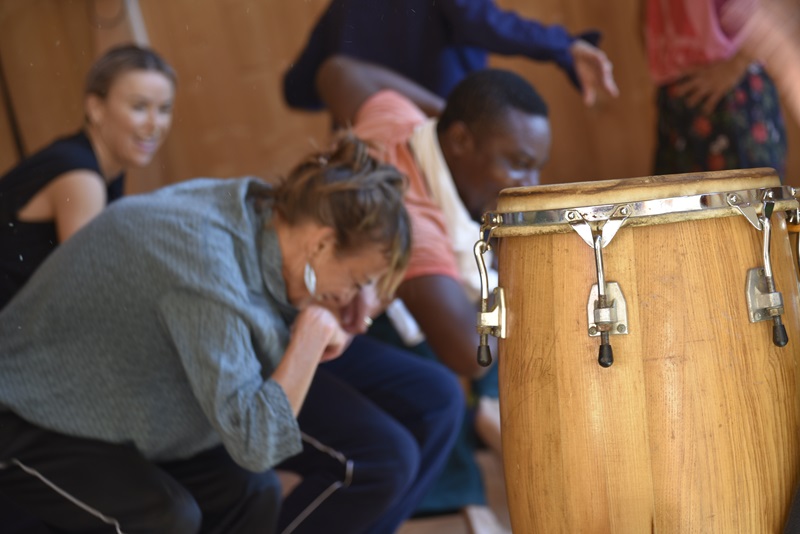
Ama mevcudiyet (presence) nedir? Mevcudiyet kendimizi akort etme biçimidir. Çevreyle ilişki içinde olmanın bir yoludur ve özellikle de içeride olup bitenlerle, sürekli değişen bir girdapla ilişki içinde kalabilmektir. Aynı zamanda dışarıdakileri de bir referans olarak tutmayı sürdürmektir. Yani bu bir ilişki kurma meselesidir. Ve benim için “trans” halinin temel gücüdür. Vodoun’da trans hali, bedende ikamet eden bir tanrısallığın ifadelerinden biridir. Bana göre trans hali, aynı anda pek çok şeyi algılama ve buna göre davranma kapasitesi. Lorenzo’yla derslerde vermeye çalıştığımız şey bu. Benim için çok ilginç olan, Afrika merkezli dans çalışmalarına derinlemesine girdiğinizde bu danslara içkin olan pek çok biyomekanik ilkeyi fark etmek. Bu Frey ile de üzerine çokça konuştuğumuz bir şey, bu gerçek bir çalışma alanı ve başka şeyler için de paha biçilmez olan bir şey. Tabii ki sadece bir “form” haline dönüşürse, tüm bunları kaybedebiliriz. Bu yüzden formdan mümkün olduğunca uzak durmaya çalışıyorum. Bunu sevmediğimden değil, ama benim için yüzeysel bir katman gibi.
Şimdi İtalya’da yaşıyorum. Daha önce İtalya’da uzun süre yaşamamıştım. Ama şimdi orada yaşamak için geri döndüm. Barış ve Frey ile birlikte güneye inmeye karar verdik. Aslında ailem Güneyli ama ben Kuzey’de büyüdüm. Şu anda yaşadığımız bu bölge Pizzica, Tarantella gibi çok güçlü bir dans geleneğinin olduğu bir bölge.
Banu: Bu dans esnasında da bir tür trans gerçekleşiyor değil mi?
Francesca: Evet bir tür trans. Bu konuda inanılmaz şanslıyım çünkü bana araziyi satan kadının kocası aslında nesillerdir Pizzica çalıyor ve çok incelikli bir şekilde çalışıyorlar. Onları pizzica çalmaya davet etmeye başladım, yani ortak bir ilgimiz olduğunu hissettim. Ve böylece bu dans üzerine çalışmaya başladım. Yine basit bir adımın ne kadar karmaşık olabildiği gerçeği ile karşılaştım. Otuz yıldır ritim üzerine çalışıyor olsam bile, bunu çözmek ve hissedebilmek benim için hala çok zor. Ve onlar için çok kolay; “İşte böyle, bir-iki-üç, bir-iki-üç, kolay, değil mi?” diyorlar. Sonra da “Hayır, hayır, fikir bu değil!” diyorlar. Hiç de kolay olmadığını biliyorum. Bu kadar sofistike olması inanılmaz. Gelenek çok enteresan bir olgu, bir yandan bir basitliği var çünkü paylaşılabilir olması gerekiyor; ama aynı zamanda çok karmaşık. Çünkü bence bu aynı zamanda kimin “içeride” kimin “dışarıda” olduğunu teyit etmenin de bir yolu.
Banu: Anlıyorum. Topluluk içindeki ve dışındaki insanlar…
Francesca: Evet, çünkü sık sık “ Toplumsal dans, geleneksel dans, bunlar çok kapsayıcı…” diyoruz ama eğer kodu bilmiyorsanız kendinizi dünyanın en yalnız insanı da hissedebilirsiniz. Bu benim son zamanlarda üzerine düşündüğüm bir şey.
Banu: Evet çok doğru… Çok teşekkür ederim Francesca, seninle konuşmak harikaydı.
Francesca: Rica ederim!
[1] Classics (klasikler) veya klasik çalışmalar, klasik antik çağın incelenmesidir. Batı dünyasında, klasikler geleneksel olarak Klasik Yunan ve Roma edebiyatı ve ilgili orijinal dilleri Antik Yunanca ve Latince olan çalışmaları ifade eder. Classics ayrıca yan konular olarak Greko-Romen felsefesi, tarih, arkeoloji, antropoloji, sanat, mitoloji ve toplumu da içerir.
[2] Vodoun: Vodún veya vodúnsínsen, Benin, Togo, Gana ve Nijerya’daki Aja, Ewe ve Fon halkları tarafından benimsenen geleneksel bir Afrika dinidir.
[3] İngilizcedeki contemporary (çağdaş) kelimesi tercih edilmiş. Çağdaş dans ve Çağdaş Afrika dansı gibi isimlendirme ile mesafelenmeyi ima ediyor.
[4] https://www.culture.gouv.fr/en/Thematic/Dance/Dance-in-France/National-Choreographic-Centres
[5] Cosmopolitanism: Ethics in a World of Strangers (ıssues of Our Time), Kwame Anthony Appiah, 2007.
[6] Axis Syllabus, Frey Faust tarafından yazılan 6. edisyonu hazırlık aşamasında olan hareket eden beden üzerine bir müfredat önerisi https://www.axissyllabusforum.org/literature.
Interview with Francesca Pedulla
August ‘22- Luc en Diois
Banu Açıkdeniz: Dear Francesca, I want to ask how and where your path crossed with the Axis Syllabus archive, but can we start from your experience in academia?
Francesca Pedulla: My academic path was a bit torturous, I would say. In high-school I studied classics: Ancient Greek and Latin. These fields brought me to the university, since no one can do anything only with that kind of education otherwise. At the university I studied architecture for two years. I continue to be passionate about architecture and I really enjoy working with architects, because I like the way they see the world. But I was also very lucky to realise early on that the architectural discipline was not exactly my thing.
I was already dancing then, but dancing was more of a hobby for me. I was not thinking that dance could become my way of life. My family was not artistic, so dance was not really part of my childhood world, but I was very interested in theatre. That is why I chose architecture; to be able to design and create scenography.
Then I realized that actually I was more interested in ideas; concepts, philosophy, creative texts, etc. So I started studying theatre and performance history and theatrical literature. This is the field I ultimately graduated from.
Meanwhile, I simultaneously studied African dances at the beginning of this second cycle. It was a big positive change and at a very challenging moment for me personally, as I was struggling with anorexia. I think getting closer to dance changed me a lot, along with other things as well. It was healing, in a very good way. I re-felt the power of my body. And I think that one of the aspects that really brought me to study and go deeper in African culture was its attention towards the body. The body is perceived as both channel and matter. (“It is the presence of matter.” consider deleting) Because all ceremonies and all rite of passages are constructed through material manipulation and the use of the body to express the Devine, through song, the spoken work, the rhythm… In order to create changes, metamorphosis. I think it was a very important aspect for me, for my personal growth and healing path.
When I started to study I had a chance to meet amazing people, and among them especially Koffi Kôkô a choreographer from Benin, a pedagog and dancer. He was living in Paris. Paris was really the center of the new wave of African dance. I started to study with him there. It’s thanks to Koffi that I decided to dance.
His work was very interesting because he was the first one who succeeded in bringing the spirituality of his culture -the Vodoun culture- into the European dance field, together with a group of young choreographers from Africa. For the first time they were trying not to confine this new wave of art in a folkloric cage. So they created FEIDA, Fédération Internationale de la Danse Africaine. So they were claiming the right to do art using their own knowledge.
So when I finished university, I started studying at this school. It was a 2 year acting school in France/ Bourdeux. We were learning a lot of different African dances and styles. These were different ways of dancing from different ethnic groups. We were also studying biomechanics, anatomy and music. In these years I started to go to Benin. The school was organizing these trips which focussed on working on site in context. Benin really struck me. I fell in love.
Then, I started to go to Benin every year. And I decided to do a PhD in Paris. My topic was the “The Contemporary State of Dance in West Africa”. So I was not working on the “Contemporary African Dance”, but on what was happening in Africa. It was very related to what was happening especially in France at that moment. France was developing what we now call “Contemporary African Dance”. They were sending French choreographers to Africa to create a new style of dance. As they have choreographic centers in France- The National Choreographic Center (CCN)[1]– they were trying to do the same thing in West Africa.
I stayed in Paris for almost one year. And then I was disgusted, I really couldn’t get along with my professor. I was pretty tired of being always on the other side: studying, instead of doing. So I quit in a very abrupt way. I took a night train to Italy without saying anything to anyone (laughs).
In Italy, I began working in the company of Giovanni Di Cicco, a very well known Italian choreographer. At one point, I decided to create my own pieces – instead of only working in other people’s projects. I said ‘Look, I have some ideas about how to preserve tradition but also keep evolving it’. So what I was looking for was not a way merely to preserve the traditional dances I had learned. And this approach was not welcomed in Paris at the time.
In the summer of 2001, I took my first workshop with Frey Faust, in Vienna. You know sometimes life goes like this… I was there for the ImPulsTanz Festival… many years ago.
I thought then, that with Axis Syllabus, Frey was the only person I knew at the time that had found a way to transmit true movement neutrality. This precious information about what constitutes universal basics was missing from my experience. I was studying African dance for more than 10 years yet I was missing that link.
I needed something to decode the steps when traveling and studying in West Africa. Of course it was not only about the steps and not only about a dance [form]as well.
Physically, I was trying to study movement analysis, while attending classes or working with different contemporary dance teachers, but the tools they offered were not helpful for understanding those dances that I was so attracted by better. My eagerness to keep searching and using them as an artist as well was strong, but it was not enough for me. So this is the link between The Axis Syllabus and my studies and that was the reason I started to study The AS.
During this period I began to visit Benin by myself and there I had the chance to meet Eric Acakpo. (Actually he would be here at the Nomadic College, but unfortunately he couldn’t have the visa this year). His family is very important there, because they are practicing and transmitting the Vodoun culture for many years. But also what is very specific about this family is that they stay very open mentally. Eric’s father in particular welcomed many researchers from different fields into his temple and family home and had lively discussions with them. So his mindset was very [special].
I was welcomed as a daughter and this experience was very important for me. I was there with a friend, an anthropologist. And we were doing research together. My research was more about dance, but it was more or less the same motivation or inquest as her’s; finding an entry point into a culture that you don’t belong to.
This was a very intense training. During these 2-3 years, I stayed in Benin for 3-4 months out of the year in Eric’s family house with my friend or sometimes alone. We were the only white people there. Even though the locals were super welcoming, we still had a lot of difficult moments of adaptation or misunderstandings. We had the chance to see many ceremonies. So I really was not there as a visitor. Then in 2003, I decided to get initiated into Vodoun. It was another big step. You enter into that world, so you don’t see it from outside anymore. It is very hard too. Because I absolutely didn’t want to land myself in this mysticism without loosing my hook. So it was -and still is- hard work to keep going back and forth between my mindset (my way of looking at reality).You do not always find similitude. In any case, it continues to be a very important experience for me.
My work started to go in two main directions. One was -let’s say- the more “technical” work supported by the Axis Syllabus, which was not purely technical of course. And the other one was the study of the Vodoun culture: being there, staying there, indeed living there. Even if these two worlds seem so far apart from each other, for me actually they are not. Because the main objective of the Axis Syllabus is to “re-position” the human body, to see it in relation to all other bodies, the environment, everything. We can call it “nature”. Rather than considering the human body as not “related to”, nor “a part” of everything. Looking at all these fractals, the process of evolution, and actually the Vodoun philosophy… is pretty much the same: humans are in a constant relationship with the whole environment, with all the elements. We can call them “gods”, we can call them “energies”, or we can talk about environment. So, for me absolutely there was no friction [or contradiction]between these two fields. What we started to do together with Eric, was to organize little workshops only for Beninese at the beginning. I was trying to give them some tools from the Axis Syllabus archive and use them to analyze the traditional dances.
At the beginning it was a very selfish interest. I wanted to learn. I have learned a lot by looking. Looking and looking, for hours and hours… But still there was a gap. Maybe I was not mature enough or I didn’t have enough tools, formation and experience. But I had the idea to let the tradition develop. The society evolves and things are changing. And exchange happens much faster than before. So there is a need to adapt and it becomes a kind of a pressure. And of course art also should evolve in the same way. But how? I was observing that the influences coming from the Western dance world were not fitting into the basic principles of those traditional dances. This was the problem that Frey tried to solve: the difference between the technique and aesthetics. This is still is very chaotic. Technique should be about the mechanics, the way to do things; but not related to a specific “way” of doing things.
So my point was: “if we look at the technique, the way to do things, the way the muscles work, the way the joints behave, then we’ll have the knowledge that serves us to read and better understand the heart of a specific dance or a specific step”. Once you have the heart, then you can create variations that do not exist yet.
Actually it’s how it happens in tradition. Because it’s not the replication of the steps in the same way. It’s evolving but also keeping on. So if you keep the roots you can evolve and conserve the tradition. But if you loose the roots -maybe it’s not a bad thing- but it means we’re losing something.
I was the first white person who got initiated into Vodoun though Eric’s family. I was difficult to deal with, as it was also very difficult for me to deal with them. They needed to ask themselves many questions, questions which I had to ask myself as well. They were trying to figure out the way to hep me to enter their world. But also they needed to find ways to cope with all my fears, my resistance, the doubts and my questions which were very strange to them. Eventually we did it together. Me, his family -especially his older brother and Eric- together we’ve overcome this process of translation, interweaving and confrontation.
What does it mean to live together? Although we had good intentions, we were having confrontations on both sides with a lot of prejudice that we didn’t even know that we had.
After many arguments and resolutions Eric and I found a good solutions and decided to open this box to others. So we created a project where we invited people from outside. I was also working in Europe and as I was very interested in this topic, I created a company. It was the first Italian company that came to Benin and met the Beninese company. Then we did our first project Malentendus et d’autres choses, “Misunderstandings and other things”, for which we examined and used what was happening to us when we stay together, as material for the performance.
As my academic pulse never stopped, I started to study more. There was one philosopher who especially changed my way of perceiving things about culture; his name was Anthony Kwame Appiah. He’s a half Ghanaian and half British philosopher. When I saw him at a conference, I said “now I have to read everything he wrote”. He has a very simple way of describing very complex dynamics. One of his first books is Cosmopolitanism: Ethics in a World of Strangers. Actually we created a a project based on this book. It’s analysing exactly what we were searching, with Eric. What does it mean to live together? What about different values? How to deal with the deception that the hierarchy of values are different? How to deal with different perspectives?
There is a beautiful example in this book. There was a village, where the water was not good so everyone was dying of diarrhea. Western doctors came and they wanted to disinfect the water. They were suggesting to boil the water before drinking. However there was a lot of resistance, until they talked to people in the village openly. And they found another solution. They started to say people that there are bad spirits in the water, so by boiling the water they would evaporate. It’s very interesting, no?
But honestly, who has actually seen a virus? Very few people. A virus could be also defined as a bad spirit. For me this is really the base of the work that I do with Eric. We don’t need to believe in others’ perspectives, but we also don’t need to negate them in order to keep our perspective. Negating the other perspective means there is no space for a dialogue. Dialogue in itself is the universal value. If we can get into dialogue; then we can also fight if we decide to.
So we had another big project, it was ‘ Dialogues Inévitables – The Inevitable Dialogues’ that we worked on for 4-5 years. It was a big company with 17 people. Some members were from Benin, others from Senegal, Canada and France. We started to work on this idea, the same idea in essence: observing the dynamics arising from living together, using dance and music as a tool to elaborate and transmit our perspectives.
Then, while we were researching the concept of the “dialogue”, we decided to focus on “consumerism”, something fairly new in West Africa at the time, and created a piece that told the story of ‘ God Money’. I think it was an amazing project. We worked mostly in Benin, but also in Brussels, in Berlin and in Italy as well. There were other people who were studying on the same topic or a topic that we found related; so we created projects together. It was very exciting. In Brussels, we were all working at this cite de culture, built in the 50’s in the banlieue (periphery), a very poor neighbourhood of Brussels, something the Africans had never seen before. During the project we lived and worked together closely. The connection we created was deep and powerful. Then we invited other artists and researchers to nourish our research. This project lasted for 2 years and then we started the “Traces” initiative.
Banu: Can you tell us about “Traces” which has been taking place in West Africa for years?
Francesca: Traces is a project which I conceived of with Eric. It’s the follow up to The Inevitable Dialogues. The subtitle of Traces is “interweaving wisdom”. The idea is based on the knowledge about the body in motion. You can gather such a knowledge in many many different ways. It can be scientific, theoretical, or practical… the point for me is to recognise that there are many ways to gather knowledge about the body in motion, about dance, about the relationship between dance and music and about the performative way of living with and in a body. In Traces, what we try to do is to interweave all these aspects in different ways.
Many of the participant artists come from Africa -Benin and Togo especially. But not necessarily from the same background. There are traditional dancers, contemporary dancers and break dancers. Some of them do not know anything about local traditions. We also invite dance artists from abroad. It’s a bit like here, [Nomadic College]. It’s true that we share a lot of stuff but we also have a lot of differences too. We weave a lot of differences. And my point is that we need to recognize that we’re not the same. That we don’t see life in the same way, we don’t live in the same way. So this is “Traces”. In Traces; we have trainings, we teach the Axis Syllabus© through traditional dances.
The Axis Syllabus is an entry point for the people from abroad, but it’s a way of reconsidering everything from the people, from there. At the same time we visit a lot of Vodoun ceremonies, trying to look at those ceremonies as a performer. Because there is a very high performative potential. The idea is to understand how the ancient practices can nourish the current practices. We try to make this effort.
Banu: At some point you mentioned that you came back to academia, which department was it?
Francesca: Paris 8? It was the Dance department. But as my topic was related to Africa we had lots of studies on anthropology and ethnography.
Banu: You are an independent researcher. You are giving lectures, publishing articles… Where do you give your lectures, mainly in Italy?
Francesca: Yes, I am an independent researcher. I have given talks in the United States, in Brazil, and in Italy. I’m also curating many different events. For example I collaborate in Scie Festival, in Bologna, together with Nuvola Vandini, an anthropologist who also quit academia.
What resonated in me was that The Axis Syllabus was aiming at mixing theory and practice in an honest way. Because what I was missing in academia was that. For example I was obliged to participate Cunningham classes every week. Not that it was uninteresting, but for my research, it was not useful. It’s not that I’m against academia itself. I simply realized that it was not for me anymore, I needed to be in the field and be free to focus on what I thought to be relevant.
Banu: Maybe before ending our conversation, we can talk on the material we’re working with you in your classes here in Nomadic College and the polyrhthymic body which is the focus of the classes and which I find quite interesting.
Francesca: Lorenzo Gasperoni [musician]and I have worked together for years. We met more than 25 years ago. Lorenzo is also an independent researcher. He’s also coming from the conservatory, academia. But he decided to stay inside the institution to study and practice his chosen subject, with a focus on world music. At one point he became fascinated with Afrocentric music. So we did a lot of things separately but both felt a need to try to find a common denominator, to try to find something that was an underlying principle that we could transmit to other people. Then it might develop by itself, or could be an entry point for the deeper analysis of a specific traditional dance, music or other cultural aspect, no? Something usable. Polyrhythm is at the base of many traditional dances. As I say in class, there is a way of perceiving music which is very intellectual and mathematical. Then there are ways to perceive the complexity of this music, as a language to describe or curate human dynamics. And this is beautiful, I think. I think this music really expresses the complexity of life. Therefore it is both very complex and at the same time very easy to enter in.
Banu: Bears contradictions in it, right?
Francesca: Yes, a lot of contradictions but they’re also a part of us. So that’s why when we teach we try to give also these -let’s say- “technical” information that our culture provides. And I think they’re really useful, because it gives a way of analysis. But there is also another aspect which is more impalpable and magical; the capacity of human beings to create all these things. It is inherent to the human condition.
So when we relate to the polyrhythmic body; besides the complexity of internal relationships between the joints, muscles, etc. we can also find the connection to other phenomena, such as the cranial-sacral rhythm, which is very very slow. Then we have our circulatory rhythm, breathing and digestion cycles… All these rhythms play together. And what is very interesting is that we have the same thing in music, each rhythm has its own reason to be. They can be independent, and the same time, through their juxtaposition they create magic. Independency in dependency.
What I teach with Lorenzo is the ability to be aware of all these rhythms at once, instead of having a narrow focus; we can call it presence, no? The first week of the Nomadic College I was working more on a theoretical basis. The first workshop was a kind of preparation for this theoretical base and also it was more open, was not really related to the Afrocentric culture. But, what is presence? It’s a way of being tuned, it’s a way of being in relation to the things and especially being able to be in relation with what is happening inside, a shifting vortex. And keeping what is outside as a reference to relate to. So it’s a question of establishing relationships. And this for me is the fundamental power of the “trance” state. In Vodoun, the trance state is one of the expressions of a divinity residing in the body. My personal opinion is that the trance state is the capacity to perceive many things at the same time and behave accordingly. This is what I and Lorenzo are trying to give. And what is very interesting also for me that by going deeply into the study of Afrocentric dance -this is something we also discuss a lot with Frey- there are so many biomechanical principles that are inherent to these dances that are invaluable for other things, a veritable study field. Of course, if it becomes mere “form”, we might lose all these things. So I’m trying to stay as far as possible away from form. It’s not that I don’t like form, but for me it’s like a superficial layer.
Now I am living in Italy. I didn’t spend my life in Italy that much. But I have come back to live in Italy. With Barış an Frey we decided to descend to the South. Actually, my family is from the South but I grew up in the North. This area where we live now is the area of Pizzica, Tarantella, a very strong dance tradition..
Banu: Which is also a kind of trance, right?
Francesca: Yes it is a trance. So now I had an amazing chance because the husband of the woman who sold me the land actually is a Pizzica player for generations and they do a very subtle work. So I started to invite them to play, I mean I feel that we have this common interest. And so I started to study. Again I faced with how complex it is, a simple step. Even if I’m working with rhythm since 30 years now, still it’s very difficult for me to decode and be able to feel… And for them it’s so easy; they say ‘Oh, it’s like this, one-two-three, one-two-three, it’s easy, no?’ And then they say ‘No, no, it’s not the idea!’ And I know that is not easy at all 🙂 It’s incredible how sophisticated it is. Because for me the tradition is very interesting, because in one way there is a simplicity because they need to be shareable. But at the same time they are very complex because I think it’s a way also to affirm who is in and who is out.
Banu: I see. The community and the people outside the community.
Francesca: Yes, because we often say that ‘Ah, the communal dance, the traditional dance, they are so inclusive..’ but you might feel the loneliest person in the world if you don’t know the code. This is something that I’m thinking lately.
Banu: Yes so true… Thank you so much Francesca, it was great to talk to you.
Francesca: You’re so welcome!
[1] https://www.culture.gouv.fr/en/Thematic/Dance/Dance-in-France/National-Choreographic-Centres

